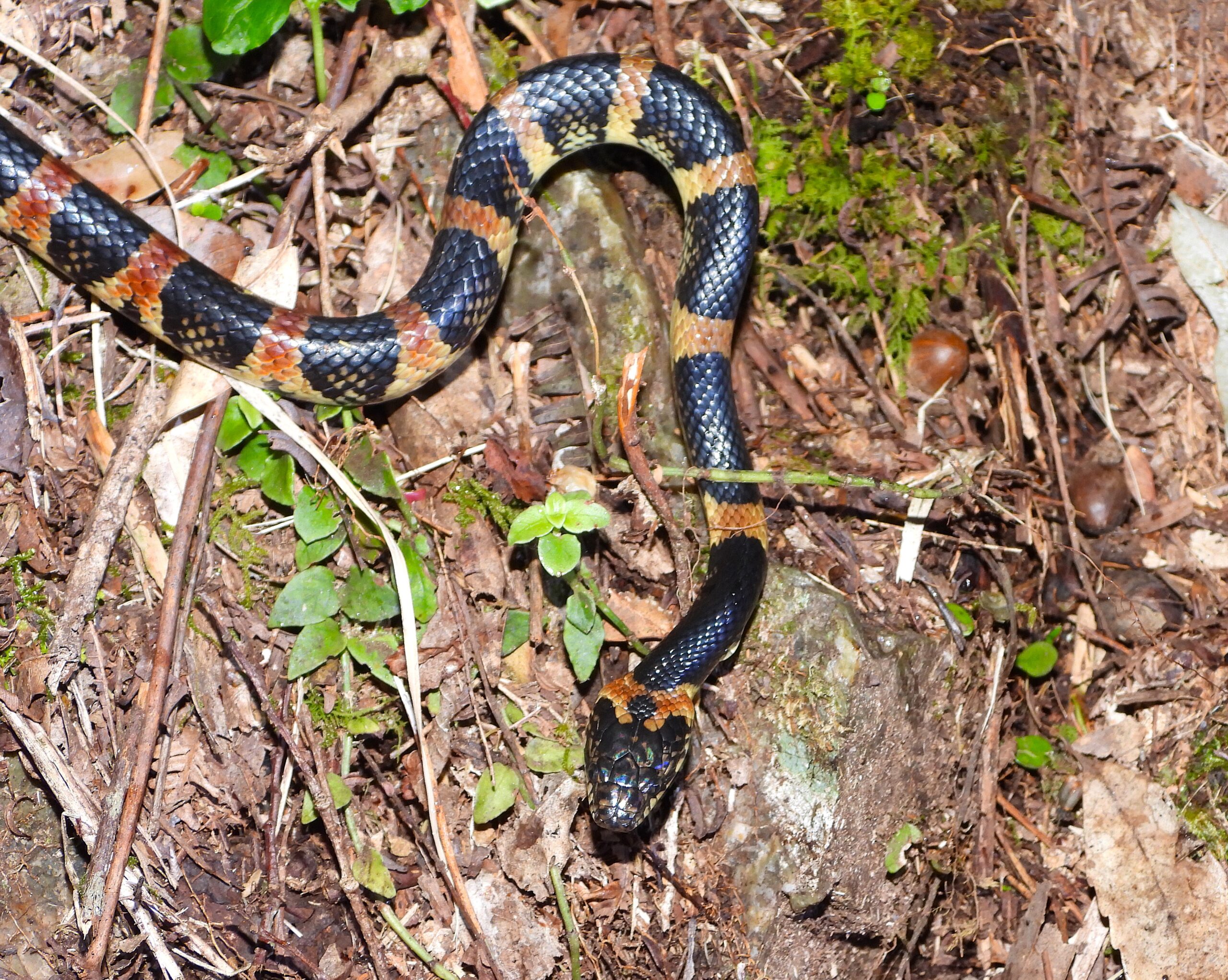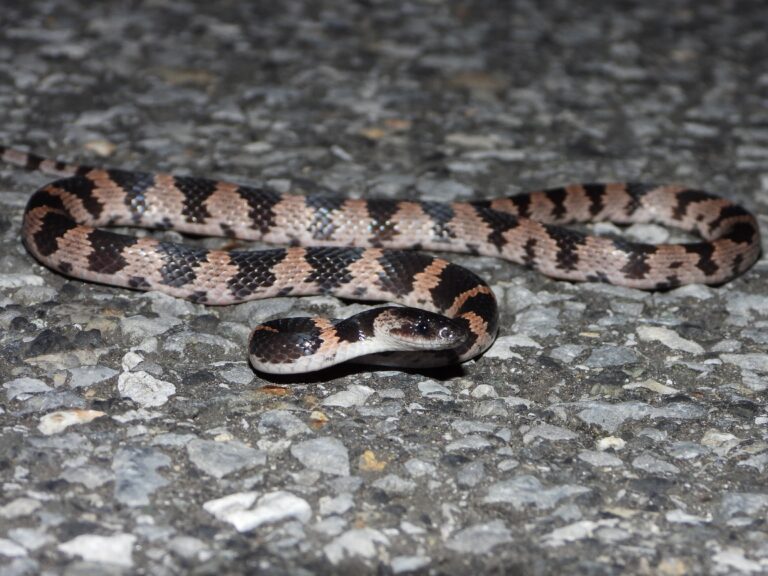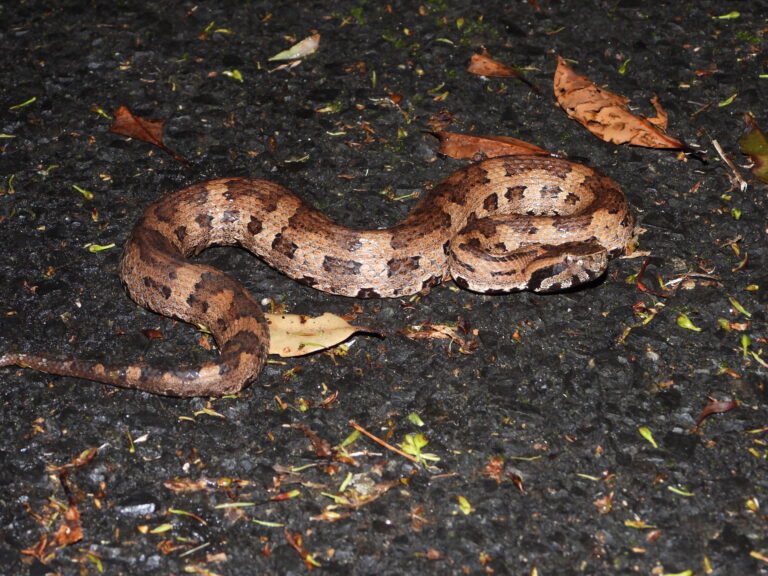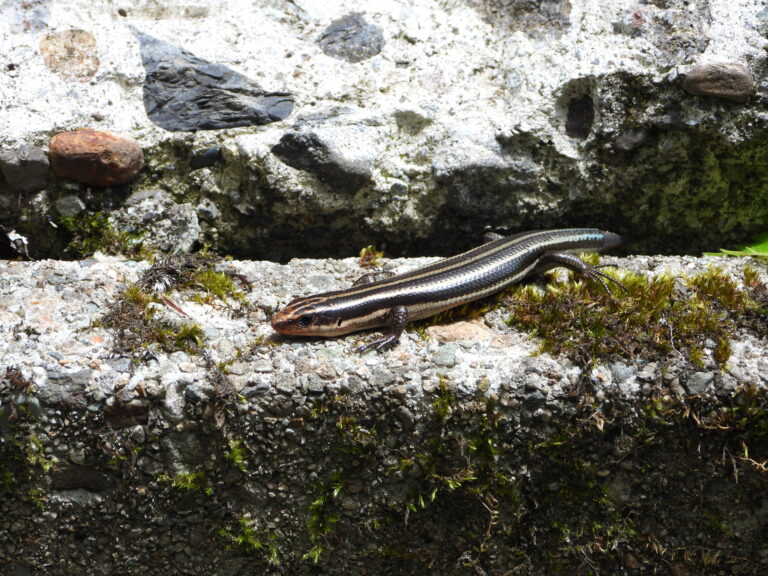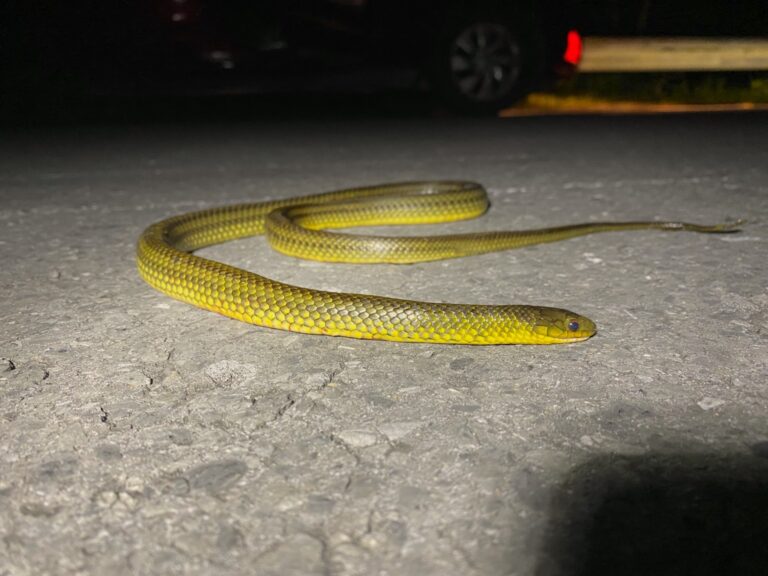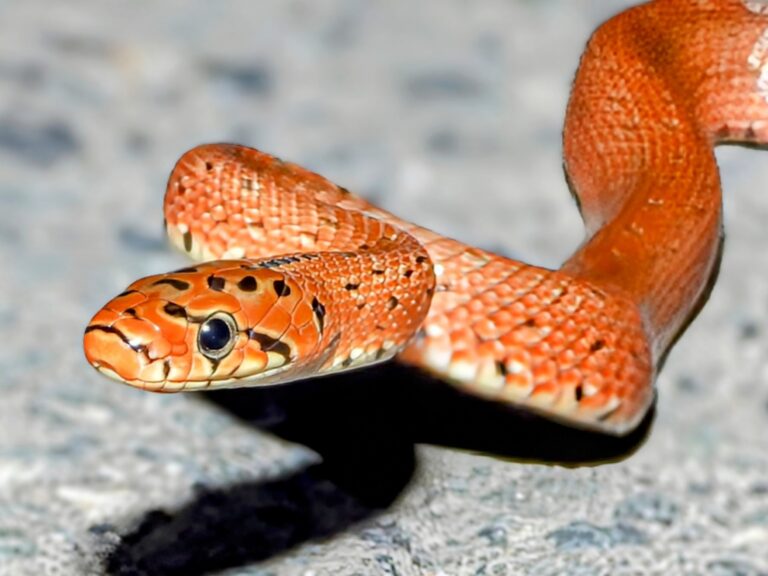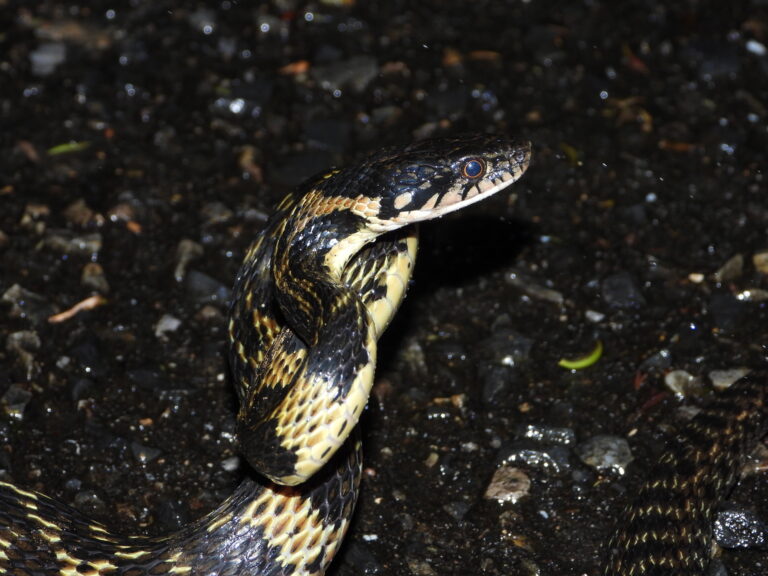Loo-Choo Big-tooth Snake (Lycodon semicarinatus) – Wildlife of Japan
Introduction
The Loo-Choo Big-tooth Snake (Lycodon semicarinatus), known locally as Akamata, is a non-venomous colubrid snake found only in Japan’s Ryukyu Islands, including Amami Ōshima and Okinawa. Although often feared for its bold behavior, it poses no danger to humans. It is one of the most recognizable reptiles of the subtropical Ryukyus, showing remarkable adaptability across a variety of habitats.
Appearance
Adults usually range from 80 cm to around 170 cm in length, and large individuals may exceed 2 m. The body is reddish-brown or yellowish-brown with broad dark crossbands, and the head is darker than the body. The belly is pale yellow to grayish. Young snakes are often brighter in color, while older individuals appear duller. When threatened, this species may raise its head, strike repeatedly, and emit a strong-smelling secretion from the cloacal glands as a defense.
Habitat & Distribution
This snake is endemic to the Ryukyu Archipelago of southern Japan, occurring on islands such as Amami, Tokunoshima, and Okinawa. It inhabits a wide range of environments including lowland forests, forest edges, grasslands, and sometimes near human settlements. The species is mainly nocturnal, hiding during the day under logs, stones, or dense vegetation and becoming active after sunset.
Behavior
The Loo-Choo Big-tooth Snake is an alert and agile nocturnal predator. It hunts by active searching, often moving through leaf litter or low vegetation in search of prey. When disturbed, it tends to stand its ground, flattening its neck or striking rather than fleeing. It also releases a foul odor as a deterrent, a common behavior among non-venomous snakes in the region.
Diet
This species feeds mainly on small vertebrates such as lizards, frogs, fish, birds, and small mammals. It is an opportunistic carnivore, adapting its diet to local prey availability. Observations show that it occasionally consumes other snakes as well.
Reproduction
Breeding occurs in the warm season. Females lay clutches of several elongated eggs in hidden locations such as under fallen logs or within soil cavities. Hatchlings appear in summer and resemble the adults but with more vivid coloration. Males are known to engage in wrestling-like combat behavior when competing for mates.
Conservation
The Loo-Choo Big-tooth Snake is listed as Least Concern (LC) on the IUCN Red List, and its population is considered stable throughout the Ryukyus. Local threats include road mortality and habitat alteration, but overall the species remains common. It plays an important role in the island ecosystem as both predator and prey. In Okinawan folklore, Akamataa appears in traditional legends, symbolizing the link between people and nature in the islands.
Author’s Impression
The Loo-Choo Big-tooth Snake is probably the snake you are most likely to encounter in Okinawa’s forests. Its reddish bands and strong build make it both beautiful and powerful in appearance. The one I saw was close to two meters long — an impressive sight under the beam of my flashlight on a quiet forest road at night. If you walk the island’s forest paths after dark, you just might meet this magnificent serpent yourself.


